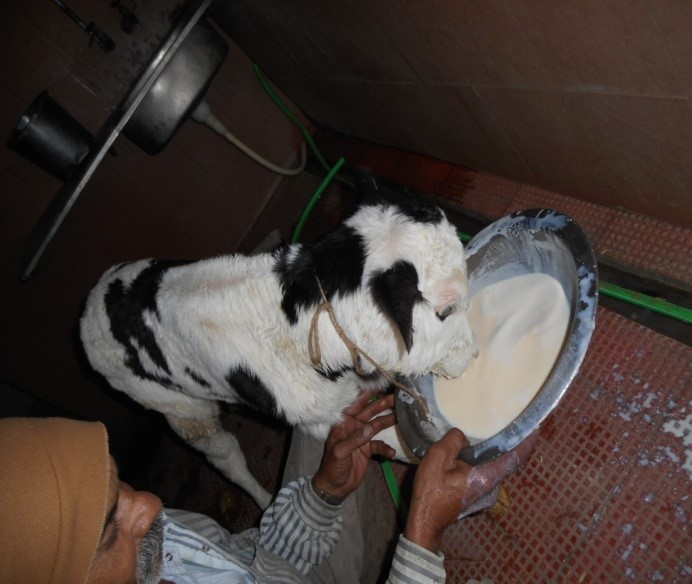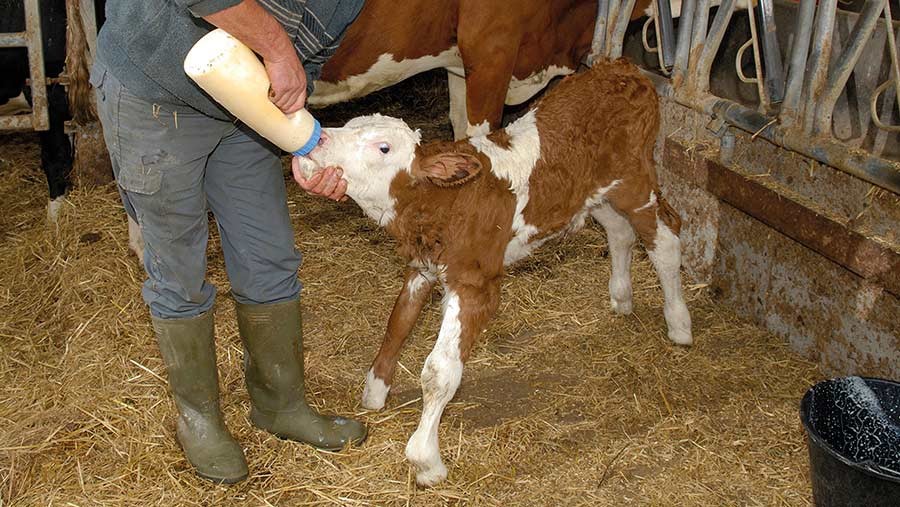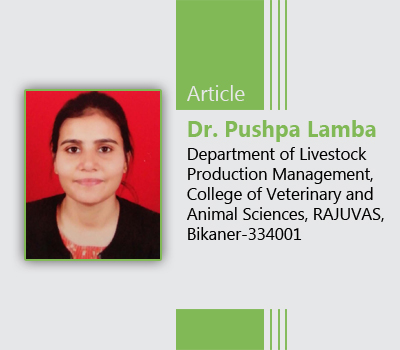Calves are the future herd replacement stock of the dairy industry, therefore, calf management is crucial for the sustenance and development of the livestock sector. Calf management is essential for preserving and maintaining good quality germplasm. Research indicates that 57% of mortality is seen in the first 24 hr and 75% within 7 days of birth. The most common cause of calf morbidity in the neonatal period is diarrhea. Ideally calf mortality should be < 5 % with growth rate of 0.5-0.7 kg/d.
Colostrum, is first milk produced by the mother after birth which is vital to the newborn calf because it contains antibodies (also known as immunoglobulins, or IgG), which provide immunity. It is also rich in energy and nutrients that are essential for growth.
A newborn calf lack immunity because antibodies do not pass across the cow’s placenta to the fetus’ circulatory system. The syndesmochorial structure of the bovine fetal membrane prevents passage of immunoglobulins from maternal circulation into fetal circulation. Antibodies in colostrum provide calves with their initial protection.
Colostrums is having 7 times the protein and twice the total solids of normal milk, thus it gives an early boost in portion and solid intake. It contains higher amount of minerals and vitamin A which are essential to fight againt disease. Colostrums give a laxative effect which is helpful in expulsion of muconium (first faeces). The cows should be vaccinated against contagious and infectious diseases which help to increase the quantity and quality of gama globulins in colostrums.
Calves need colostrums within four hours of birth – ideally within 30 minutes. Time is imperative because a newborn calf’s digestive tract allows antibodies to pass directly into the blood. After 24 hours, the calf’s intestines cannot absorb antibodies intact. The absorptive cells lining the small intestine are immature at birth. In this stage they indiscriminately take up large molecules like immunoglobins. As the calf grows older hour by hour, there is a change of epithelia cells of small intestine from immature type to mature type which cannot allow large protein molecules. This phenomenon is called ‘gut closure’ The absorbed antibodies protect against systemic invasion by pathogens while antibodies that are not absorbed play an important role in protection against intestinal disease.
Quantity of colostrums to be fed is 1/10th of body weight.
- 15-30 minutes of life – 5-8 % of body weight
- 10-12 hours of life – 5-8 % of body weight
- 2nd day – 10% of body weight
- 3rd day – 10% of body weight
Methods of feeding colostrums
1) Natural suckling: Traditional method, the amount of colostrum can not be measured and colostral disease transmission may occur.

2) Pail feeding: Requires training of calves, once trained easy to manage, weighed quantity of colostrum can be fed to calves, and chances of contamination are more.

3) Bottle Feeding: Provides natural suckling satisfaction to the calf and buffalo calves fed colostrum with a bottle and reared separately had a better growth rate.

Substitute of colostrums: Mixture of-
- 1 raw egg +
- 3ml castor oil +
- 10000IU vitamin A +
- 80 mg Aureomycine add water to make 1000ml volume warm at 400C and feed it.
Authors:

PUSHPA LAMBA1* AND VIVEK SAHARAN2,
1. Department of Livestock Production Management, College of Veterinary and Animal Sciences, RAJUVAS, Bikaner
2. Department of Animal Nutrition, Lala Lajpat Rai University of Veterinary and Animal Sciences, Hisar, Haryana















